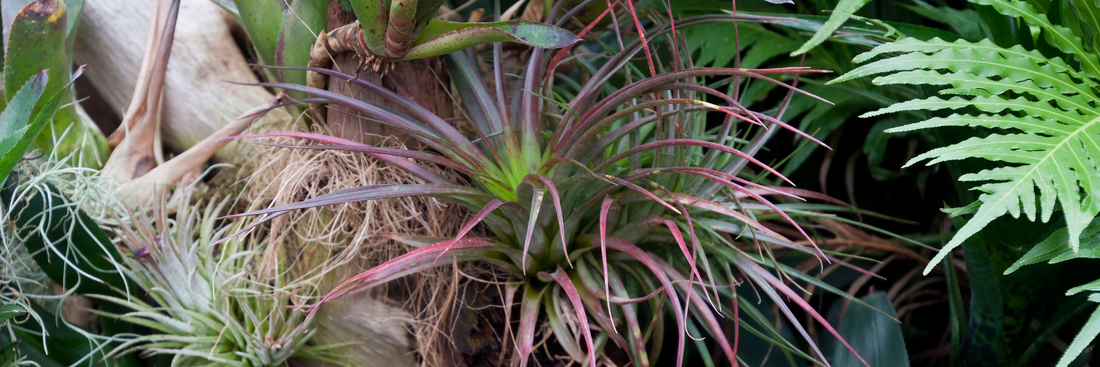
Air Plants Unveiled: Essential Care Tips for Thriving Tillandsias
Plantita & Co.Share
Air plants, scientifically known as Tillandsias, are fascinating specimens that capture the imagination with their unique ability to survive without soil. These low-maintenance plants have gained popularity among gardening enthusiasts and interior decorators alike due to their striking appearance and versatility. In this blog post, we will explore the enchanting world of air plants and provide you with essential care tips to ensure their health and longevity. Whether you're a beginner or a seasoned plant enthusiast, these guidelines will help you create an optimal environment for your air plants to thrive.

- Understanding Air Plants:
Unlike most plants that rely on soil for nutrients, air plants are epiphytes, meaning they attach themselves to other plants or objects and absorb moisture and nutrients from the air and rainfall. This unique adaptation allows them to be displayed in creative ways, such as mounted on driftwood, placed in glass terrariums, or suspended in decorative holders.

- Light Requirements:
Air plants thrive in bright, indirect light. Place them near a window with filtered sunlight or provide them with artificial light sources, such as fluorescent or LED lights. Avoid exposing them to direct sunlight for prolonged periods, as it can scorch their delicate leaves.

- Watering Techniques:
One of the most critical aspects of air plant care is proper watering. Unlike traditional plants, air plants cannot survive solely on air. Here are some essential watering tips:
-
Mist and Soak: The most common watering method is to mist your air plants with water using a spray bottle, ensuring they receive a thorough misting at least once or twice a week. Alternatively, you can soak your air plants in room temperature water for 20-30 minutes every one to two weeks. After watering, allow them to dry completely before placing them back in their display.
-
Water Quality: Air plants are sensitive to chemicals found in tap water, such as chlorine and fluoride. To ensure their well-being, use filtered or distilled water, or allow tap water to sit out overnight to allow the chlorine to dissipate.
-
Drying Time: After watering, it is crucial to provide adequate air circulation and ensure the plants dry within four hours to prevent rotting. Avoid leaving them in closed containers or excessively humid environments.

- Air Circulation:
Air plants require good air circulation to thrive. Place them in areas with proper ventilation and avoid overcrowding them in enclosed spaces. Gentle air movement helps prevent moisture buildup, reducing the risk of fungal or bacterial issues.

- Temperature and Humidity:
Air plants prefer temperatures ranging from 50°F (10°C) to 90°F (32°C). They thrive in average room humidity, but in dry environments, you can provide them with occasional misting or place them near a humidifier.

- Fertilizing:
While air plants can survive without regular fertilization, occasional feeding can promote healthier growth. Use a balanced, water-soluble fertilizer specially formulated for air plants, diluted to half the recommended strength, and apply it once every one to two months during the growing season.
Conclusion:
Air plants, with their intriguing ability to thrive without soil, offer a delightful and unique addition to any plant collection or decor scheme. By understanding their needs and implementing proper care techniques, you can ensure the longevity and vibrancy of these captivating plants. Remember to provide them with adequate light, water them properly, and maintain good air circulation. With these essential care tips, you can enjoy the beauty and resilience of air plants in your home or office for years to come.
